How to deal with spider mites on cucumbers in the open field and in a greenhouse
On hot and dry days in spring and summer, many summer residents have to face a serious enemy. Despite its tiny size, spider mites on cucumbers can cause huge and sometimes irreparable damage. The spider-like insects cope with the task of completely destroying adult plants in just 1-2 weeks. Fragile seedlings in the greenhouse die as a result of their invasion even faster. Resisting this scourge is not easy, and the main thing here is not to waste precious time. Cucumber rescue measures should be taken immediately after pest detection.
Insect features and signs of infection
Helps the spider mite populate the plant in its invisibility. It is almost impossible to see single insects on cucumbers, the body length of which barely reaches 1 mm. Their colony grows rapidly - within a month of life, the female manages to lay from 100 to 200 eggs. The most favorable period for spider mites occurs in dry weather, when the air warms up to 20 ° C and above.
On the eve of cold weather, insects climb under fallen leaves, into the upper layer of earth or manure, into the corners of greenhouses, where they safely wait out the winter. The wind contributes to their spread. With its gusts, ticks travel considerable distances both horizontally and vertically. Those summer residents who grow cucumber seedlings on window sills or balconies located at a height of the 14-16th floor are not insured against their appearance.
Insects settle on the underside of the leaf, tightening it with a thin web. In the future, it and the pests themselves - dots of red, orange, yellow-green, milky, quickly moving along thin threads - can be seen on its upper part. They feed on cell sap. In an infected plant, the leaves are covered with silvery or yellowish specks. They merge rather quickly, turning into light spots. The growth of a cucumber slows down, its leaves wither and begin to die off. They first turn yellow and then dry out.
After destroying the lower leaves, spider mites accumulate at the top of the plant. Weakened cucumbers become vulnerable to other pests and dangerous diseases... They are often affected by gray mold.
How to secure landing?
Preventive measures do not guarantee complete protection of cucumbers from spider mites, but they do significantly reduce the risk of insects. The ideal place for wintering pests is heaps of rotten foliage. Therefore, it is necessary to carefully monitor the cleanliness of the garden or greenhouse. When the last crop is harvested, the plants are removed from the beds and destroyed.
The fight against spider mites involves the creation of unfavorable conditions for its development and reproduction. The professionals provide some advice.
- Observe the rules of crop rotation, annually planting cucumbers in different areas. In the place where they grew last season, it is better to arrange beds with tomatoes or cabbage.
- Adhere to the recommended plant layout. The thickening of the plantings facilitates the spread of pests and makes it difficult to control them.
- Dig up the garden bed before sowing or planting cucumber seedlings.
- Timely get rid of weeds, which are the main food for overwintered insects at the initial stages of their development.
- Inspect the plants carefully at least once every 2-3 days. The earlier a spider mite is found on cucumbers, the less the crop will suffer. It is easier to get rid of the few pests: the leaves affected by them are cut off and burned.
The owners of greenhouses are not insured against the appearance of insects. Moreover, in a closed ground, pests multiply faster, which is facilitated by heat (temperature from 30 ° C) and low (less than 60%) air humidity.
To protect the plants in the greenhouse, additional measures are taken:
- achieve 85-90% humidity;
- 2 times a year (in spring and autumn) the hermetically sealed structure is disinfected by fumigating it;
- after harvesting, remove the top layer of soil;
- disinfect the trellis (it is best to burn it with a gas burner);
- increase the immunity of cucumbers, feeding them with compounds rich in phosphorus.
How to scare off the pest?
To combat insects in the greenhouse and in the beds, special chemical compounds or folk remedies are used. The former allow you to destroy pests, the latter only scare them away, but their advantages are safety and environmental friendliness.
You can treat cucumbers from a spider mite by the following means:
- soapy water;
- alcohol (96%, but not technical);
- herbal infusions.
They will not cope with extensive damage, but if the insect colony has not yet had time to grow, it is advisable to start with their use.
Planting alcohol is sprayed at least three times. A week should elapse between the first and second treatment. In cool weather, you can wait longer - 10 days. The third spraying is started after 8-10 days. The next step is to carefully observe the cucumbers. When insects reappear, the plants are treated again.
Advice
Spider mites on cucumbers will not be a problem if you spray the plantings with infusions of herbs poisonous for him. But you need to remember that exceeding the recommended dosage is dangerous for plants.
Means prepared on the basis of the following components are effective against pests.
- Barkhattsev. Half filling the bucket with dried flowers, pour them with warm water and let it brew for 48 hours. The resulting composition is filtered and laundry soap (40 g) is dissolved in it. Spraying of cucumbers is carried out in the evening hours and in dry weather.
- Potato tops. Put 1.2 kg of freshly cut plants in a bucket of warm water. After 4 hours, the infusion is filtered and the planting is treated with it. It should completely cover the cucumbers affected by spider mites. This infusion is also useful for combating caterpillars and aphids.
- Stems of tomatoes. Pouring 4 kg of fresh tops with 10 liters of water, place the container on the stove and boil the mixture for half an hour. After cooling and filtering the composition, add a small piece (40 g) of laundry soap to it. The resulting solution is diluted with pure water 2 times, after which it can be used for spraying.
- Aconite-nosed. Salvation from spider mites is an alcoholic infusion of any parts of the plant (roots, tubers, leaves) collected during budding. Dissolving 100 ml of the product in 1 liter of water, treat the affected cucumbers with it. For infusion, take 70% alcohol.
- Dandelion roots. Pouring 30 g of crushed dry raw materials into a container, pour 1 liter of warm water into it. It will be possible to use the infusion after 2-3 hours.
- Hogweed. The roots of the plant are harvested before or after flowering. Having dried them and flooded with water (at the rate of 1 kg of raw materials per 10 liters of liquid), the mixture is left for a day. The leaves and stems of the hogweed are harvested regardless of flowering. They are crushed and, adding water (2 liters per 1 kg of green raw materials), are ground into a gruel. Having pressed it through cheesecloth, the mass is poured with water (15 l) and insisted from 6 to 12 hours. Having filtered the mixture, the liquid obtained from the cow parsnip is added to it.
- Garlic. Having cleaned and chopped 2 medium heads, 1 liter of water is poured into a container with the resulting mass. Garlic infusion is prepared for 5 days. Before using it, mix it well, filter it and halve its concentration by adding pure water.
- Datura ordinary. To prepare the infusion, dried plants are crushed and 100 g of raw materials are poured with 1 liter of water. 12 hours later, the solution is filtered, after which it is ready for use.You can also treat cucumbers from a spider mite with a decoction from the leaves of the plant. Pouring 1 kg of dry mass with a small volume of water, the mixture is brought to a boil and kept on low heat for 2-3 hours. The cooled product must be filtered. Before use, water is added to it, bringing the volume of the insect repellent composition to 10 liters.
- Onions. Its husk is infused with water. The minimum period is 12-15 hours, but it is better to wait 5 days. For 1 liter of liquid, take 20 g of raw materials.
Moss or bark scare away spider mites. Having poured boiling water over the plant materials for disinfection, they are well dried. The bark can be warmed up in the microwave or oven. After that, it or moss is buried in the ground under the cucumbers. You can put a container filled with turpentine under the plants. Insects don't like his mates.
Biological methods
In the fight against spider mites, all means are good. The use of his natural enemies guarantees success in it. The worst of them is the phytoseiulus mite. If you populate this predator in a greenhouse (it is enough to put a few leaves colonized by it near the focus of infection), it will destroy the pests in just 2 days. Fitoseyulus is equally dangerous for adult insects and their eggs. To achieve a sustainable result, new individuals are added to the greenhouse at intervals of 3 weeks.
A special fungus - entomophthora adjara will also help to get rid of insects. Ladybugs love to feast on spider mites. To lure them to the site, spicy herbs are planted next to the cucumber beds. These beetles like the smell of blooming dill.
Noticing a spider mite on cucumbers, it is necessary to act in a complex manner.
- Leaves infested with insects are removed from the plants.
- Stop watering (for 2-3 days).
- Phosphorus fertilizers are applied.
- Sprinkle the necrotic areas with ash.
In case of mass infection, you will have to move on to drastic measures. Cucumbers heavily affected by pests are destroyed (dug up and burned). Healthy plants and those that can still be saved are sprayed with special formulations.
Chemical protection
Numerous insects are fought with acaricides and insectoacaricides. Despite the fact that they destroy both adult pests and their eggs, the main drawback of these drugs is their toxicity to humans. In addition, insects quickly develop immunity to them, therefore, it is recommended to change the compositions for spraying cucumbers after 2-3 uses.
No matter how strong the drug is, to forget about the spider mite, several treatments are required. If the pest population is not completely destroyed, new insects will soon hatch from the eggs. They will be even more dangerous, since the usual formulations will no longer be able to protect plants from them. The interval between spraying depends on the weather conditions. The hotter it is outside, the more often cucumbers are processed. In summer, the procedure is usually repeated every 7 days - this is how long it takes for the female to mature and lay eggs.
The following insecticides have confirmed their effectiveness in the fight against spider mites.
- Akarin. Works within 4-8 hours after spraying. The crop from the plants treated with the drug can be harvested only after 3 days;
- "Plant-pin". Ideal for greenhouses. The release form (sticks) makes it easy to use. It is advisable to use the drug in the early stages of infection. It begins to act on insects in 2-3 days. Provides long-term (up to 1.5 months) protection;
- "Etisso". Solves 2 tasks at once: nourishes the plant and protects it from pests. Acts from within - through the root system;
- Apollo. Destroys insects and prevents their reproduction by sterilizing them. The best results can be achieved by using it together with other acaricides;
- Fitoverm. Due to its biological origin, the drug kills many pests, but it is almost safe for humans. Another advantage is long-term action.If the weather is warm and dry, re-treatment is carried out in a week. Cool and rainy days reduce the effectiveness of the drug.
The processing of cucumbers with "Aktofit", "Karbofos", "Vertimek", "Bitoxibacillin", "Flumite", "Iskra-BIO", "BI-58", colloidal sulfur is effective. But not all of them are dangerous for spider mite eggs. Summer residents are wary of the drug "Actellik" because of its high toxicity. When working with it, you must strictly follow safety rules: wear a protective mask, raincoat, rubber gloves.
Advice
The best time for spraying is evening. The sun's rays evaporate chemicals before they affect insects.
Spider mite control is exhausting and not always productive. In the early stages of pest infestation, it is difficult to detect, and when it becomes widespread, it may be too late to take action. Nature took care of the spider mite, endowing it with the ability to actively reproduce and adapt to the effects of chemicals. Braiding the plant with a web, insects quickly move along it, hiding from moisture and solutions poisonous for them.
How to deal with a pest on cucumbers - by chemical, biological or folk methods - is up to the summer resident. Each of the described methods has advantages and disadvantages. Some of them are effective only in the initial stages of the development of a spider mite, others are applicable for extensive lesions. When choosing a remedy against a pest, it is necessary to take into account the conditions in which cucumbers grow. In the greenhouse, some methods will help; in the open field, others will provide a guaranteed result.
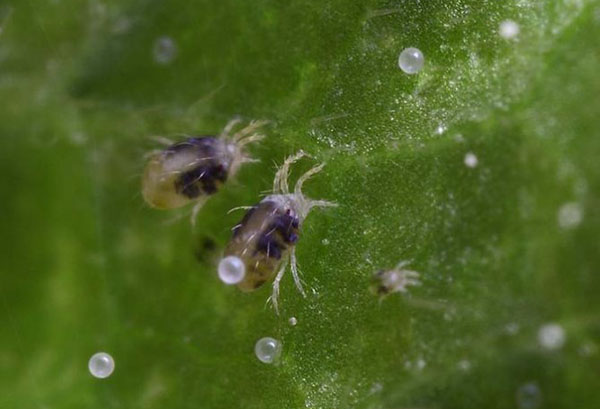
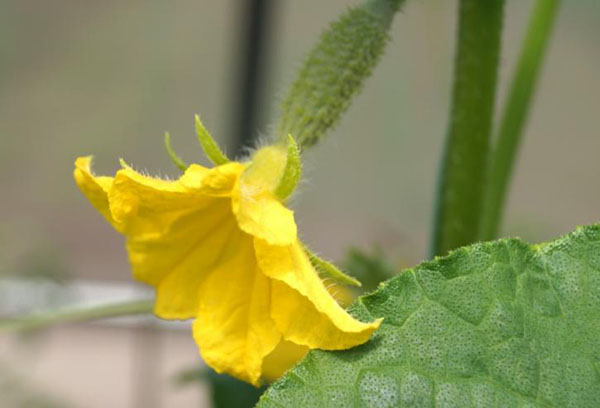





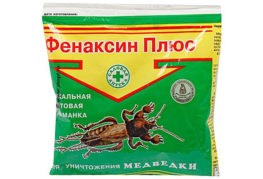
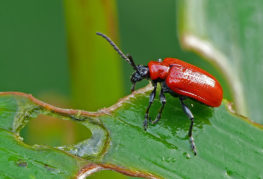
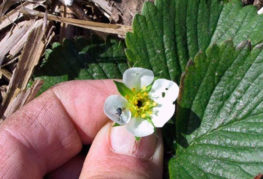
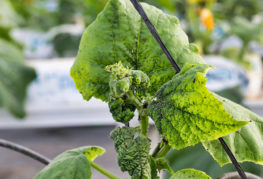
and will be published shortly.